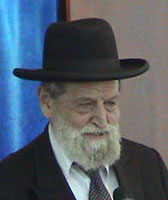Beit Midrash
- Sections
- Chemdat Yamim
- Bemare Habazak - Rabbis Questions
- Shabbat and Holidays
- Yom Kippur
- Yom Kipur Laws
Answer: The Rama (Orach Chayim 610:4) cites two minhagim found in Rishonim, regarding white clothes. The Mordechai (Yoma 723) says one should wear clean clothes to resemble angels. The Rama extends this to white clothing for the same reason. He then cites the minhag to wear a kittel, which not only fulfills these two elements, but since it is a major component of burial shrouds, reminds one of the day of death, which helps feel the urgency to do teshuva. The Magen Avraham (610:5) says that the idea of "imitating" angels does not apply to women, but says that the idea of a kittel to remind of death does. We do not seem to have such a practice these days, and whatever the reason for that, we would not suggest it. It is not uncommon, though, for women to wear white. Some say that in lieu of a kittel, white clothes for women can serve at least as a reminder of purity and the whitening of sins (see Minchat Elazar II:63). In any case, there is no reason a woman should avoid white.
The matter of gold has later sources. Rabbi Akiva Eiger (on Shulchan Aruch ibid.) cites a minhag to avoid wearing gold on Yom Kippur because it is reminiscent of the sin of the Golden Calf. Interestingly, he says that it does not apply to women (or levi’im) because they did not participate in that sin. The Mateh Ephrayim (an important work on the laws of Yamim Nora’im, 610:9) reports a minhag to put an atara on the kittel, but says that it should not be of gold, apparently for the same reason. He also says that it applies to women, as while women did not sin, they are still part of Bnei Yisrael who do not want reminders of that sin. On the other hand, he limits the matter of gold to attaching them to things that are related to atonement (see the idea of ein kateigor na’aseh saneigor in Rosh Hashana 26a). He posits that the kittel is related to atonement because the white is reminiscent of the whitening of the sins. The B‘tzel Hachochma (VI:3) thereby rules that it is not a problem to wear a gold watch on these grounds. We certainly assume that the issue is not the color gold but the actual substance (see Kinyan Torah Ba’halacha VI:36).
B’tzel Hachochma says that there could be a different problem with a gold watch, based on a concept mentioned by the Mateh Ehprayim and the Mishna Berura (610:16). This is that one should not wear adornments that he or she wears only on Shabbat and Yom Tov because we are supposed to be under the influence of eimat hadin (fear of the impending judgment). This point raises the complex general issue about Yom Kippur – are we supposed to be in a good, happy mood or not? We cannot resolve that issue clearly in this forum, but the short answer is: "Yes and no." Some point out that Tosafot (Megilla 31a) says that women do wear special adornments on Yom Kippur. In any case, it would seem that the question is about special types of adornments that one wears only on Shabbat. It is likely that there is not an issue with wearing a suit or dress usually worn on Shabbat.
There are many different practices, and we have seen sources and logic to justify many of them. The stakes on this matter are presumably low. There does not seem to be too much conformity on these matters, and it is fine to remain that way. We would say as follows. One’s outward appearance has some effect on his own frame of mind, and for an individual or family to have a special Yom Kippur dress code (besides the matter of no shoes) is healthy, as it is for different people to have different minhagim in this regard. If one woman feels "Yom Kippur-dik" by wearing more white than usual and another feels that way by not wearing her regular jewelry, that is fine. Only the matter of a kittel for a married man is something which has become standard and should remain that way under normal circumstances.

Bemare Habazak - Rabbis Questions (626)
Rabbi Daniel Mann
395 - An Avel as a Chazan for Yamim Noraim
396 - White and Nice Clothes and Gold on Yom Kippur
397 - The Time and Place for Netilat Lulav
Load More

Ask the Rabbi: Rebuking Those Talking during Davening
Rabbi Daniel Mann | Elul 5785

Ask the Rabbi: Keeping Bread on the Table
Rabbi Daniel Mann | Iyar 5785

Ask the Rabbi: Taking a Different Object than Lost
Rabbi Daniel Mann | Adar 5785

Ask the Rabbi: Mincha after Sunset
Rabbi Daniel Mann | Cheshvan 5786

Rabbi Daniel Mann

Encouraging a Child to Criticize His Parent
5774

Calling a Kohen Who is a Katan
Av 22 5777

Bikur Cholim by Electronic Means
Shvat 1 5782






















